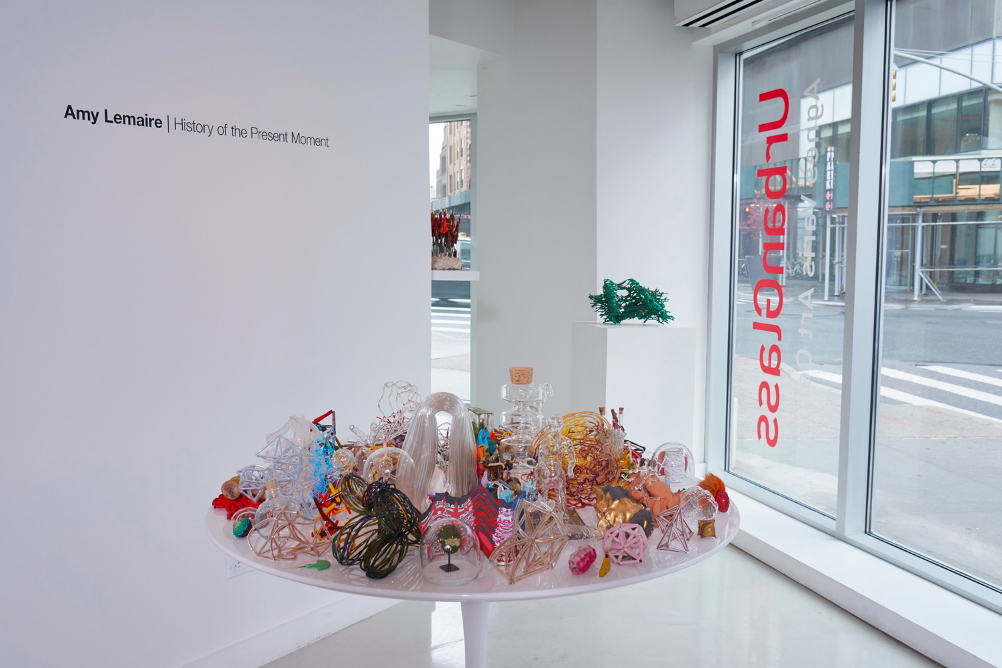In the 1980s, New York glassblowers befriended the mafia. At least, that’s the story UrbanGlass executive director Cybele Maylone heard at the organization’s 40th anniversary benefit in May. The founders initially established the glass studio (originally called the New York Experimental Glass Workshop) on Great Jones Street in 1977. In 1981, they moved to Mulberry Street. Their block was also home to a social club where legendary mafioso John Gotti and his family did business. According to Maylone, the neighborhood was initially suspicious of the ragtag group of artists infiltrating their home.
At some point, though, they realized that the work had Venetian origins—glassblowing has Italian roots. The organized crime rings became protective of the artists. “Someone was telling me at the gala about getting his parking tickets fixed,” Maylone says. “There were a lot of artists that were really young and probably not paying too much attention.” If they didn’t realize what was occurring at the time, they later discovered that many of their new neighborhood friends had been rounded up and indicted.
In the years since, UrbanGlass has become a much more professional outfit. In 1991, they moved into their current building in Fort Greene. While the Brooklyn Academy of Music was just down the street, the neighborhood was yet to become a thriving cultural district. Now, UrbanGlass is a community space that offers skilled artists and intrigued novices opportunities to work with the material. Glass is a difficult, delicate medium that requires high temperatures and precise movements. Shaping it necessitates highly specialized tools, massive furnaces, and plenty of room. The 17,000-square-foot studio space offers two 1,000-pound furnaces, 14 kilns, and six crucibles where is glass is reheated. The cold shop, where artists work on cooled glass, features sanders, sinks, and other heavy equipment.
UrbanGlass regularly hosts fellows and visiting artists who use the studio to further their practice. Maylone, who comes from a broader art making background, has been surprised by the diversity of projects at the studio. While people often think that glass work starts and ends with Dale Chihuly, she says, “in reality, everyone from [Robert] Rauschenberg to Kiki Smith to Matthew Barney to Tony Oursler are here or have come to Urban Glass to make work.”
A host of international exhibitions are now showing pieces made at UrbanGlass. At the Hammer Museum in Los Angeles, Jeanine Oleson’s glass instrument is on view. At the Aldrich Contemporary Art Museum in Ridgefield, Connecticut, Suzanne McClelland’s first museum survey includes a new site-engaged installation that incorporates glass, ceramic, and paint. Recent exhibitions by Win McCarthy (at Silberkuppe in Belgium) and Ivana Basic (at Marlborough Contemporary in New York) both featured products from the artists’ time at UrbanGlass.
No need to have an upcoming show to work at UrbanGlass, though. The center offers workshops that cover topics from ergonomics to best business practices. Long gone are the days of UrbanGlass’s associations with the Manhattan underworld—this year, Maylone says she’s excited about the studio’s summer camps. Though the high temperatures and heavy equipment limit participation to children eleven and older, Maylone suggests that participants’ age isn’t such an issue. “Frankly, it’s true that adults can also not necessarily be the wisest decision makers,” she says lightly. She and her team ensure high teacher to student ratios so that no one, quite literally, gets burned. urbanglass.org



